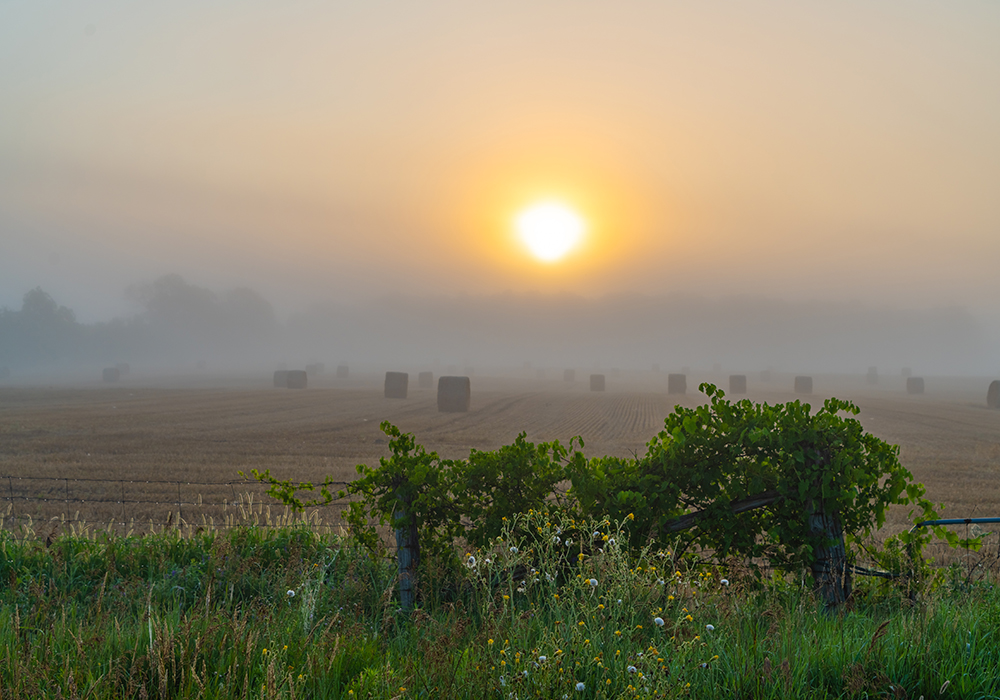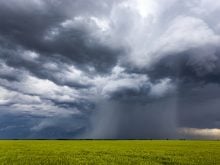One summer weather event is regularly overlooked but potentially severe: humidity.
By its simplest definition, humidity is the amount of water vapour in the air. The warmer the air, the greater the distance between air molecules and therefore the greater the holding capacity of air for water vapour. Warm air has the capacity to hold much more water than cold air.
The most common way humidity is reported is relative humidity, which is probably one of the most misunderstood terms used to describe weather. Relative humidity is a ratio of the amount of water vapour in the air compared to the maximum that it could hold under those same conditions, and is expressed as a percentage.
Read Also

Short rapeseed crop may put China in a bind
Industry thinks China’s rapeseed crop is way smaller than the official government estimate. The country’s canola imports will also be down, so there will be a lot of unmet demand.
For example, if we had air temperature of 10 C and eight grams of water vapour per kilogram of air, our relative humidity would be 100 per cent, since air at 10 C can hold eight grams of water vapour. If this same air was warmed to 30 C and the amount of water vapour in the air didn’t change, the relative humidity would be around 29 per cent, because air at 30 C can hold 28 grams of water vapour.
This is where the misunderstanding develops. When the air temperature was 10 C and the relative humidity was 100 per cent, people would say it is humid out, but once the temperature warmed to 30 C and the relative humidity dropped to 29 per cent, people would say it is very dry out. In reality, the amount of water vapour in the air has not changed, only the temperature.
A better way to measure humidity is by using the dew point temperature. This measurement is a fairly simple way of telling us exactly how much moisture is in the air no matter how the temperature changes during the day.
The dew point is the temperature at which air is cool enough for condensation (or dew) to form. In other words, it is the air temperature that would give us 100 per cent relative humidity.
For example, if it is 18 C outside early in the morning and the dew point is 18 C, the relative humidity would be 100 per cent. By afternoon, as the air warms, the dew point would still be around 18 C if no additional water vapour was added or removed, but the relative humidity would drop.
The best way to determine humidity is as follows:
At dew points less than 10 C, the atmosphere is fairly dry.
Dew points in the 10 to 15 C range are comfortable.
Dew points in the 15 to 20 C range are humid, starting to feel uncomfortable.
Dew points over 20 C are very humid, start to feel very uncomfortable.
Dew points over 25 C are extremely humid and conditions will be very uncomfortable and even dangerous.
Let’s go back to relative humidity again to pound home the difference between this and the dew point.
If the dew point is 25 C, it is very humid, no matter what the temperature. If the temperature is 35 C, the relative humidity would only be around 55 per cent, and I could guarantee that at least one person would say it’s not that humid.
So remember, if it’s a hot summer day with dew points in the low 20s, even if the relative humidity is only 50 per cent, it is still humid out.
Next week, we will explore extreme rainfall events and the factors that contribute to them.
Daniel Bezte is a teacher by profession with a BA in geography, specializing in climatology, from the University of Winnipeg. He operates a computerized weather station near Birds Hill Park, Man. Contact him at dmgbezte@gmail.com.
















